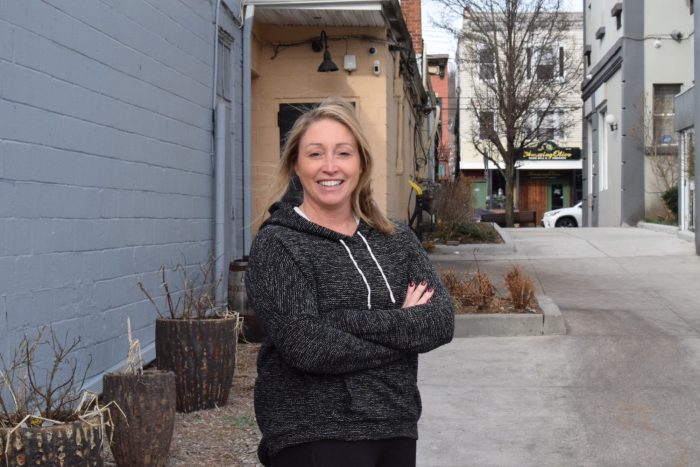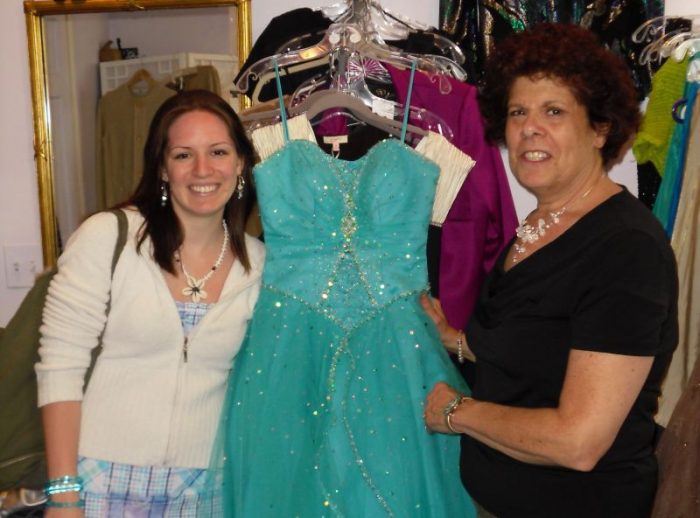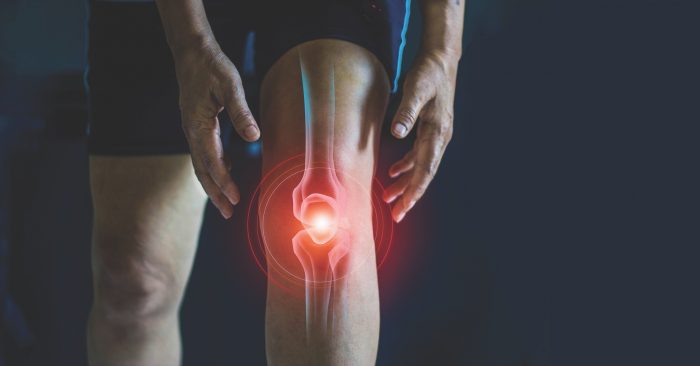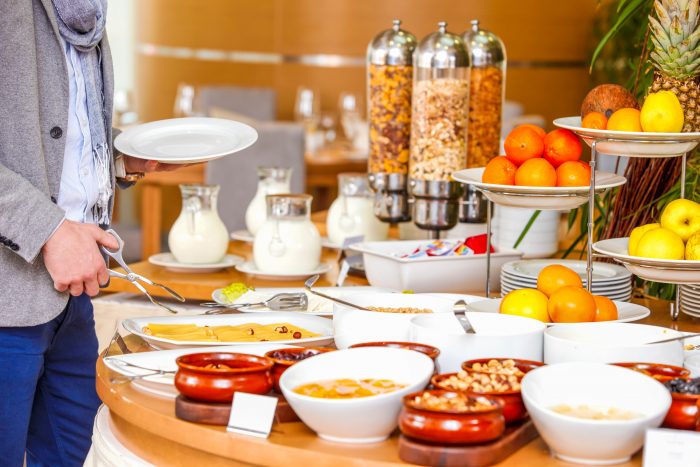The Northport Chamber of Commerce is hosting a donation drive for the people of Ukraine through April 5. Items needed include blankets, aspirin, rolled gauze, saline eye drops, Vaseline in small containers, feminine products, diapers, band aids and Pepto-Bismol pills. Drop off locations in Northport include Coach Realtors at 66 Gilbert Street, Copenhagen Bakery at 75 Woodbine Avenue, Cow Harbor Realty at 67 Main Street and Dr. Ron Iannacone’s office at 482 Main Street. For more information, please call 631-754-3905.
Yearly Archives: 2022
Pattern Finders in Port Jefferson hosts prom dress giveaway
Stacy Davidson of Pattern Finders/Stacy’s Finds in Port Jefferson knows how unexpected expenses can be difficult especially during these unpredictable times. To help local families, she wishes to donate gowns and tuxedos to enable a wonderful experience for local seniors who might have to skip the event due to monetary issues.
“My amazing customers always answer the call for a prom drive. Rather than limit the young ladies to the donated gowns, I will make my entire vast inventory of spectacular gowns and formal dresses available for the girls to come to the shop and choose from. Fedora Lounge Boutique Hair Salon in Port Jefferson is one of the local salons donating hair styling for some of the girls and Give Kids Hope in the village will also supply the students in need,” said Davidson.
Located at 128 East Main Street, Port Jefferson, Pattern Finders is open Wednesday through Sunday. For more information or to make an appointment, please call 631-928-5158.
Leg. Anker provides COVID-19 test kits to supermarket employees
Suffolk County Legislator Sarah Anker visited three local supermarket stores in March to distribute COVID-19 at-home test kits to their employees. She met with managers and employees of the Stop and Shops in Rocky Point and Miller Place, as well as the King Kullen in Middle Island, where she distributed over 700 test kits between the three stores.
This effort follows Legislator Anker’s recent Drive-Thru Test Kit Distribution event which was open to all residents, as well as the dissemination of boxes of test kit to the various senior communities and day care centers in the area.
“I want to thank the essential workers of our local supermarkets, who worked tirelessly throughout the worst days of the COVID-19 pandemic. It is my hope that these COVID-19 test-kits will help to keep the stores’ workers and patrons safe and healthy as we start to work our way back to a sense of normalcy,” said Legislator Anker.
“I also want to express my appreciation for our Local Unions 338 and 1500, who represent the workers of Stop and Shop and King Kullen. Through these challenging times, our local unions have continued to dedicate themselves to ensuring workers and their families are protected and supported,” she said.
Medical Compass: Managing osteoarthritis pain without drugs
By David Dunaief, MD

If you are one of the 32.5 million in the U.S. who suffers from osteoarthritis, you know it can make it painful to perform daily tasks. Osteoarthritis (OA) most often affects the knees, hips and hands and can affect sleep quality and mood, in addition to mobility.
Common first-line medications for arthritis pain are acetaminophen and nonsteroidal anti-inflammatory drugs, such as ibuprofen. Unfortunately, while medications treat the immediate symptoms of pain and inflammation, they don’t slow osteoarthritis’ progression, and they do have side effects, especially with long-term use.
Here, we’ll focus on approaches you can use to ease pain without reaching for the medicine cabinet. Some may slow worsening — or even reverse symptoms — of your osteoarthritis.
Does dairy help or hurt?
With dairy, specifically milk, there is conflicting information. Some studies show benefits, while others show that it may contribute to the inflammation that makes osteoarthritis pain feel worse.
In the Osteoarthritis Initiative study, researchers looked specifically at joint space narrowing that occurs in those with affected knee joints (1). Results showed that low-fat (1 percent) and nonfat milk may slow the progression of osteoarthritis in women. Compared to those who did not drink milk, patients who did saw significantly less narrowing of knee joint space over a 48-month period.
The result curve was interesting, however. For those who drank from fewer than three glasses a week up to 10 glasses a week, the progression of joint space narrowing was slowed. However, for those who drank more than 10 glasses per week, there was less beneficial effect. There was no benefit seen in men or with the consumption of higher fat products, such as cheese or yogurt.
However, the study was observational and had significant flaws. First, the 2100 patients were only asked about their milk intake at the study’s start. Second, patients were asked to recall their weekly milk consumption for the previous 12 months before the study began — a challenging task.
On the flip side, a study of almost 39,000 participants from the Melbourne Collaborative Cohort Study found that increases in dairy consumption were associated with increased risk of total hip replacements for men with osteoarthritis (2).
Getting more specific, a published analysis of the Framingham Offspring Study found that those who consumed yogurt had statistically significant lower levels of interleukin-6 (IL-6), a marker for inflammation, than those who didn’t eat yogurt, but that this was not true with milk or cheese consumption (3).
We are left with more questions than answers. Would I recommend consuming low-fat or nonfat milk or yogurt? Not necessarily, but I may not dissuade osteoarthritis patients from yogurt.
Does vitamin D help?
Over the last decade, the medical community has gone from believing that vitamin D was potentially the solution to many diseases to wondering whether, in some cases, low levels were indicative of disease, but repletion was not a change-maker. Well, in a randomized controlled trial (RCT), the gold standard of studies, vitamin D had no beneficial symptom relief, nor any disease-modifying effects (4). This two-year study of almost 150 men and women raised blood levels of vitamin D on average to 36 ng/ml, which is considered respectable. Researchers used MRI and X-rays to track their results.
The role of weight
Weight management is a crucial component of any OA pain management strategy. In a study involving 112 obese patients, those who lost weight reported a reduction of knee symptoms. Even more exciting, there was also disease modification, with reduction in the loss of cartilage volume around the medial tibia (5).
On the other hand, those who gained weight saw the inverse effect. A reduction of tibial cartilage is potentially associated with the need for knee replacement. The relationship was almost one-to-one; for every 1 percent of weight lost, there was a 1.2 mm3 preservation of medial tibial cartilage volume, while the exact opposite was true with weight gain.
Exercise and diet for the win!
Diet and exercise trumped the effects of diet or exercise alone in a well-designed study (6). Patients with osteoarthritis of the knee who lost at least 10 percent of their body weight experienced significant improvements in function and a 50 percent reduction in pain, as well as reduction in inflammation, compared to those who lost 5 to 10 percent and those who lost less than 5 percent. This study was a randomized controlled single-blinded study with a duration of 18 months.
Researchers used biomarker IL6 to measure inflammation. The diet and exercise group and the diet-only group lost significantly more weight than the exercise-only group, 23.3 pounds and 19.6 pounds versus 4 pounds. The diet portion consisted of a meal replacement shake for breakfast and lunch and then a vegetable-rich, low-fat dinner. Low-calorie meals replaced the shakes after six months. The exercise regimen included one hour of a combination of weight training and walking with alacrity three times a week.
Therefore, concentrate on lifestyle modifications to reduce pain and potentially disease-modifying effects. The best effects shown are with weight loss and with a vegetable-rich diet. In terms of low-fat or nonfat milk, the results are controversial at best. For yogurt, the results suggest it may be beneficial for osteoarthritis, but stay on the low end of consumption, since dairy can increase inflammation.
References:
(1) Arthritis Care Res online. 2014 April 6. (2) J Rheumatol. 2017 Jul;44(7):1066-1070. (3) Nutrients. 2021 Feb 4;13(2):506. (4) JAMA. 2013;309:155-162. (5) Ann Rheum Dis. 2015 Jun;74(6):1024-9. (6) JAMA. 2013;310:1263-1273.
Dr. David Dunaief is a speaker, author and local lifestyle medicine physician focusing on the integration of medicine, nutrition, fitness and stress management. For further information, visit www.medicalcompassmd.com.
Bar Method franchise to open studio in Port Jefferson Village

By Julianne Mosher
Something new is heading into Port Jefferson village.
The Bar Method, a workout studio that was designed with high repetition and low impact resistance training, is officially set to open its third Long Island location right in Port Jefferson.
Theresa Livingston, the franchise owner, said she fell in love with barre almost a decade ago, but during the COVID-19 pandemic realized she wanted to bring this method close to home.
“As I got older, my joints really started to hurt and it just wasn’t maintainable anymore,” the Selden mom said. “I was looking for something that’s easy on the body and I found barre. It just works.”
Livingston said that in barre practice, one matches the working in the muscle to stretching where you lengthen and strengthen.“It’s just something you can do forever,” she said.
During the pandemic, Livingston said she started trying The Bar Method through their online classes and she knew it was the right fit.The Bar Method is all about educating our students, how they can be in tune with their body.
— Theresa Livingston
Compared to other barre studios, instructors for The Bar Method have “hours and hours” of training, Livingston said.
“We work with personal trainers, we’re taught proper alignment and modifications, and then we work in the studio to train for months before becoming an instructor,” she added.
According to the company’s website, The Bar Method exercises also include elements of Pilates, yoga and other strength training workouts fused into a ballet-inspired barre workout.
But Livingston said one doesn’t necessarily have to have a dance background to succeed and see results.
“The choreography that we do is easy to follow,” she said, “We have so many different props and equipment that you can use to help and bars in the room or different heights. So, everything can be modified.”
While Livingston was practicing online, she also traveled to The Bar Method’s only two other locations on Long Island — Huntington and Roslyn.
The commutes were long, so she said, “Let’s get one closer to us.”
“I just thought I thought the village would be the perfect spot for this,” she said. “It’s such a community. People live here, they shop here and they want to stay here. So, I just felt like it would be great to have The Bar Method here.”
Livingston signed her franchise agreement in September and officially locked in the space inside Harbor Square Mall at the end of October.
Located right on Main Street, The Bar Method is planned to take over the back part of the mall with its own entrance right next to PJ Lobster House. Livingston said that when a student walks in, the plan includes a big, open lobby featuring different apparel and retail. Inside, the studio space will have roughly 30 bar spots along with a locker room, makeup area and showers.
Livingston is anticipating a summer opening and for now is looking to get the word out about the method and what it’s all about.
“The Bar Method is all about educating our students, how they can be in tune with their body and know what’s happening,” she said. “It’s a workout that just kind of fits whatever it is they need.”
In the interim, Livingston said that she and her instructors are planning free community lessons that will pop up around the village.
For more updates on Port Jeff’s new workout spot, interested students can follow on Instagram @barmethodportjeffvillage.
Cayla’s Column: Against the Grain – A women’s history walking tour in Stony Brook Village
By Cayla Rosenhagen

For centuries, the Three Village area has been home to fearless and heroic women who were ahead of their time. During the Ward Melville Heritage Organization’s (WMHO) Women’s History Walking Tour: “Against the Grain” on March 25, eager listeners heard tales of these courageous ladies, spanning from colonial times to the 20th century.
When I arrived in Stony Brook Village for the 3:50 tour, blooming daffodils and crocuses were sprouting up across the town, celebrating the recent arrival of spring. Our group met at the historic Grist Mill, where I met the other participants and our guide, Kayla Cheshire. Kayla has worked as the WMHO’s education and outreach manager for about three years and is a passionate and knowledgeable history buff.
The event attracted history enthusiasts from all over, however, many of the participants were locals. We were even fortunate to have descendants of a local historic figure, suffragette, conservationist, and town founder Jennie Melville among us.
We gathered around Kayla as she told us about the history of the area, including how it was home to conductors of the Underground Railroad in the mid-1800s. According to legend, conductors would use coded quilts to help enslaved people, who were escaping from the still-legal slave trade in the South, along their way to freedom. Details of the quilts, including morningstar and hourglass symbols would indicate the time and type of planned journeys to the next stations, bringing them one step closer to Canada. For instance, a squiggly emblem called the “Drunkard’s Path” implied the path they had to take was a difficult, zigzagged one, possibly through rough terrain and rivers, so they wouldn’t be tracked by bounty hunters.
The tour proceeded to All Souls Episcopal Church on Main Street, then to the Stony Brook Village Center, just in time to see the majestic eagle atop the Post Office flap its wings at 4 p.m. Here we learned of philanthropist and town matriarch Dorothy Melville, wife of Ward Melville, who was known as Stony Brook’s “fairy godmother.” She was a crucial contributor to the Stony Brook Community Fund and the Museums at Stony Brook and is credited with making the village handicap accessible.
Our next stop was The Jazz Loft. Its rich history included being utilized as a fire department in the early 1900s. In 1935, the building was transformed into a museum by the Melville family and prominent local Dr. Winifred Curtis, among others. Over time, the museum changed locations, and is now called the Long Island Museum on Route 25A.
The tour came to a close at the fascinatingly historic Three Village Inn. We learned about the inn’s former owners including Richard Hallock, Jonas Smith, and Jennie Melville, and its former uses as a private residence, tea room, and finally an inn. After the last story was told, Kayla offered us all free desserts with the purchase of an entrée at the Inn and told us about some of the upcoming happenings around town.
On Saturday, April 23rd, the entire village will honor spring with Spring Appreciation Day, which entails live music, a car show, a scavenger hunt, and a petting zoo. Admission is free and the events will take place between 1:30 and 3:30 PM.
The Women’s History Walking Tour is now available by request for private groups. Additionally, the WMHO offers “Secrets of Stony Brook Village” to the public throughout the season, with completely unique and newly uncovered stories and legends about the town. The tours will be held on April 7 and 21, as well as on June 2 and 16. There are two sessions each on these days, one at 11:50 a.m. and another at 3:50 p.m. The tours are $10 per person and the WMHO asks you to please call ahead to make a reservation at 631-751-2244.
Visitors can learn even more about the stories of Stony Brook by taking a tour of the 300-year-old Grist Mill. The historic, working mill will open again on April 16th, and Sunday tours will be available all season long, from April 24 through October.
The Ward Melville Historical Organization plays a crucial role in supporting local history. You, too, can do your part by supporting them. The WMHO suggests you can help by making general fund donations, purchasing a memorial plaque, or by sponsoring an event or historic property. The organization also has several volunteer opportunities. Please visit wmho.org/support-wmho/ for more information on how to get involved.
Heckscher Museum to host Environmental Justice on Long Island virtual discussion April 5

The Heckscher Museum of Art in Huntington will host a virtual panel on Environmental Justice on Long Island on Tuesday, April 5 at 5:30 pm.
The panel is presented in coordination with Richard Mayhew: Reinventing Landscape now on view at The Heckscher Museum of Art. Mayhew’s luminous landscapes address the historic and spiritual connections between Native Americans, African Americans, and the land.
The panel features Dr. Mark Chambers, Professor of Africana Studies at Stony Brook University, and Jeremy Dennis, a contemporary fine art photographer, tribal member of the Shinnecock Indian Nation, and founder of Ma’s House, and is moderated by Justyce Bennett, Curatorial Assistant at the Heckscher Museum of Art. They will discuss the environmental justice movement to address how environmental hazards impact communities of color disproportionately.
Jeremy Dennis is a fine art photographer and a tribal member of the Shinnecock Indian Nation. His photography explores Indigenous identity, cultural assimilation, and the ancestral traditional practices of the Shinnecock Indian Nation. His work is included in the collections of The Heckscher Museum of Art, The Hudson River Museum, the New York State Museum, and others.
Dr. Mark Chambers is a professor in the Africana Studies department at Stony Brook University. His interests include environmental and technological contacts between Indigenous peoples and free and enslaved miners in North America. His recent book, Gray Gold: Lead Mining and Its Impact on the Natural and Cultural Environment, 1720 to 1840, is a cultural history of lead mining in the region that became the state of Missouri.
Justyce Bennett is the Curatorial Assistant at The Heckscher Museum of Art. She completed her master’s degree at the Winterthur Program for American Material Culture at the University of Delaware. She is interested in Black feminist art history and wrote her master’s thesis on the landscape and historic preservation efforts on St. Croix, United States Virgin Islands.
The event is free to the public, with registration at Heckscher.org/mayhewpanel
Port Jefferson High School Science Olympiads honored
The Earl L. Vandermeulen High School Science Olympiad team participated in the New York State Science Olympiad competition at Lemoyne College in Syracuse on March 19 and 20. The team placed 20th overall out of 60 teams from throughout the state.
There were 23 events in various STEM and science-related topics. The top 10 pairs of students in each event earned a medal.
Port Jefferson medal winners earned three state medals in bridges, forensics and remote sensing including 8th Place, Forensics – Gavin Onghai and Michelle Wu; 8th Place, Remote Sensing – Hugo Onghai and Benjamin Perez-Flesler; and 9th Place, Bridges – Teppei Fukuto and Riley Perrotta
“We continue to be impressed by our high school Science Olympiad students in their hard work and success,” co-coach Melissa Garcia said.
Co-coach Amanda Brideson added, “We are exceptionally proud of our entire team for not only their academic achievements but also displaying excellent sportsmanship and kindness the entire trip toward other competing teams.”
In addition to Ms. Brideson and Ms. Garcia, chaperones Mr. Gregory Gorniok and Mr. Dannie Holland joined the students.
With Port Jefferson pride, the team members congratulate competitors Ward Melville High School on their success and wish them all the luck at nationals. Photo from PJSD
Governor Hochul announces nearly 70 million COVID-19 tests so far distributed to New Yorkers
On March 31, Governor Kathy Hochul announced that nearly 70 million COVID-19 over-the-counter tests have been distributed by the State so far as part of ongoing efforts to protect New Yorkers during the pandemic.
“As we’ve seen throughout the pandemic, test kits are a critical tool in the fight to stop the spread of COVID-19 and prevent exposure to others,” Governor Hochul said. “We have already distributed nearly 70 million COVID-19 tests, and we will continue to focus our efforts on distributing at-home tests to New Yorkers and build up our stockpile so we can bolster our preparedness for the future, keep our communities safe, and safely move forward through this pandemic.”
As more New Yorkers utilize at-home tests over on-site testing, the State is scaling down its testing sites. The State has retained contracts to swiftly re-open testing sites through June if needed. Nearly 100,000 tests have been conducted at state testing sites since January 7. There are 1,910 registered locations to obtain a test in New York State, locations can be found here. All 15 of the State’s vaccine sites remain open and New Yorkers over the age of 50 are encouraged to get a second booster in accordance with the recently expanded CDC guidance.
State Health Commissioner Dr. Mary T. Bassett said, “The distribution of at-home COVID-19 tests is a critical tool helping to curb spread in our communities. I thank Governor Hochul and our partners at the Division of Homeland Security and Emergency Services for distributing millions of rapid test kits statewide, particularly to high risk communities. New research released by the Center for Disease Control and Prevention reminds us that we must continue to center equity across all of our pandemic response efforts. In getting tests to nursing homes, senior centers, food banks, and NYC Housing Authority tenants, and in keeping our state-run mass vaccination sites open to all, that’s exactly what New York State is doing.”
Division of Homeland Security and Emergency Services Commissioner Jackie Bray said, “COVID is still a very real threat and it’s critical we remain vigilant in our work to protect communities. Thanks to Governor Hochul’sleadership, New York has expanded our testing distribution operation to a scale few might have thought possible just a year ago, but we cannot rest on this accomplishment alone. As we move forward into the spring, we will continue to support our local partners however we can to ensure New Yorkers have the tools to stay safe and healthy.”
Since the beginning of the year, 68,890,256 million tests have been distributed throughout New York, including over 33 million tests to schools, 19.5 million tests to nursing homes and adult-care facilities, and more than 12.5 million tests to local officials, including counties, for public distribution in their respective communities. The distribution efforts follow the procurement of more than 90 million rapid tests in recent months.
Earlier this month, Governor Hochul announced that more than 20 million COVID-19 over-the-counter tests will be distributed across the state through the Spring to bolster New York State’s ongoing preparedness efforts.
The Spring plan includes distributions of over-the-counter test kits to nursing homes, adult care facilities, NYC Housing Authority tenants, food banks, senior centers, and schools, while also partnering with elected officials for distribution to the public, during the next few months to help identify new COVID-19 cases and keep New Yorkers safe.
Ahead of the Omicron surge in late 2021, Governor Hochul and her team identified the need to secure over-the-counter test kits to combat the Omicron surge, providing regular distributions to the general public, prioritizing schools and adult care facilities across the state.
Of the over 90 million tests procured, nearly 23 million tests have been stored to help prepare for any potential surges later this year.
Amid an increase in travel, doctors suggest stomach precautions
As travel-related restrictions from COVID-19 continue to ease, people are considering heading out on the road, to the airport, the pier, or the train station, eager to feed their curiosity and hunger about different regions and cultures.

Photo by Jeanne Neville/Stony Brook Medicine
While these travelers may be excited about the flavor of the unknown, their stomachs may not be as thrilled with these journeys, demanding attention at inopportune times or threatening to revolt with the biological equivalent of a magma eruption.
Local gastroenterologists — stomach doctors — urged travelers to take precautions as they prepare for journeys to exotic locations, on cruises or even across the country.
“Depending on where people are traveling, they may need shots,” said Dr. David Purow, a gastroenterologist at Huntington Hospital. Some areas might have a higher incidence of cholera or traveler’s diarrhea, which is typically an E. coli infection, he added. People often refer to it as Montezuma’s revenge.
Purow suggested consulting the Centers for Disease Control and Prevention’s website initially, although the government organization which has coordinated much of the response to the COVID-19 pandemic is considered a conservative organization.
Purow urged travelers to search for whether pathogens are endemic to an area, which could include reading message boards. Those boards, however, can be as reliable as so much of the rest of the material on the web, he said, which means residents should use their own judgment about the reliability of what they read.
Upset stomachs can come from a host of sources, including food that’s been out for an extended period or from various forms of contaminated water.
“Always be wary of foods that are room temperature,” said Dr. Daniel Jamorabo, a gastroenterologist and assistant professor of Medicine in the Division of Gastroenterology and Hepatology at Stony Brook University’s Renaissance School of Medicine. “That’s often how people get food poisoning. Listeria is common in dairy, such as goat cheese.”
Water
Often the source of upset stomachs that can put a porcelain damper on traveling, water can cause problems for travelers.
Prior to becoming a gastroenterologist, Jamorabo himself visited Kenya, where he unwittingly picked up the parasite Giardia, which is also a threat to people drinking creek or river water on camping trips.
Jamorabo was sick for three weeks, which encouraged him on future trips to stick to bottled water during his travels for peace of mind.
When bottled water isn’t accessible, he suggested drinking boiled water or using purifier tablets. Some tablets can take up to two hours to purify a gallon of water, although others, which afford less protection, take 35 to
40 minutes.
Jamorabo said salads or fruits, which are peeled or prepared with sources of water that are hard to track, can be
a problem.
He suggested asking residents whether they have filtration systems in their homes or if they use bottled water.
Purow added that “if there is concern, use bottled water as much as you can.”
What to bring
Doctors suggested that people tend to bring stomach remedies with them when they travel, sometimes even taking them prophylactically.
Purow said some people bring probiotics, which are “unlikely to hurt you and may decrease the chance of getting anything or shortening the duration once it’s acquired.”
Pepto Bismol and Imodium could also help prevent or treat an upset stomach, particularly for people who are anxious travelers and who get so-called “traveler’s diarrhea,” doctors said.
Purow warned that people could get black stools from some of these medications, which could also be a warning sign of a gastrointestinal bleed or ulcer.
Taking these medications for symptomatic relief, however, is “fine” and will “not suppress” the need to remove something from the body, Purow added.
One of the dangers of diarrhea is that it can cause dehydration, as the body loses necessary fluids.
Jamorabo suggested traveling with or searching for Pedialyte as a way to restore hydration.
As for the dangers of going on cruise ships, doctors recommended being careful about touching tongs or servers at buffets that many other travelers, who might have brought their own pathogens with them, might also have handled.
“On these cruises, it’s like traveling in a small city,” Jamorabo said. Stomach bugs can “spread like wildfire.”
“Always be wary of foods that are room temperature. That’s often how people get food poisoning. Listeria is common in dairy, such as goat cheese.”
— Dr. Daniel Jamorabo
Mental health
Even for those who stay at home, people may be struggling with their stomach’s response to the mental health strain created by COVID-19, the Russian attack on Ukraine, and concerns about issues like violent storm and global warming.
Stomach doctors have increasingly referred patients to psychologists and psychiatrists.
“Stress can exacerbate” irritable bowel syndrome, said Purow. Concerns about the state of the world have “unmasked GI symptoms for those who didn’t have it before.”
Purow has seen a significant increase in alcoholic liver disease, as people stuck at home raided their own liquor cabinet amid health threats, lockdowns and economic uncertainty.
Jamorabo said more stressful times can lead to an increase in stomach-related discomfort or symptoms.
“We have to pay attention to what triggers people” to have panic attacks, nausea or diarrhea, Jamorabo added.
An under-treated mood disorder could compound GI-related symptoms.
Focusing on the things people can control can help soothe the stomach, such as sleeping well, exercising and eating a healthy diet.
“Look within yourself for your own mental health,” Purow suggested. Outlets such as bottles of vodka don’t tend to help, while speaking to friends and family and eating right can aid overall health, giving digestive systems relief and resilience.


















